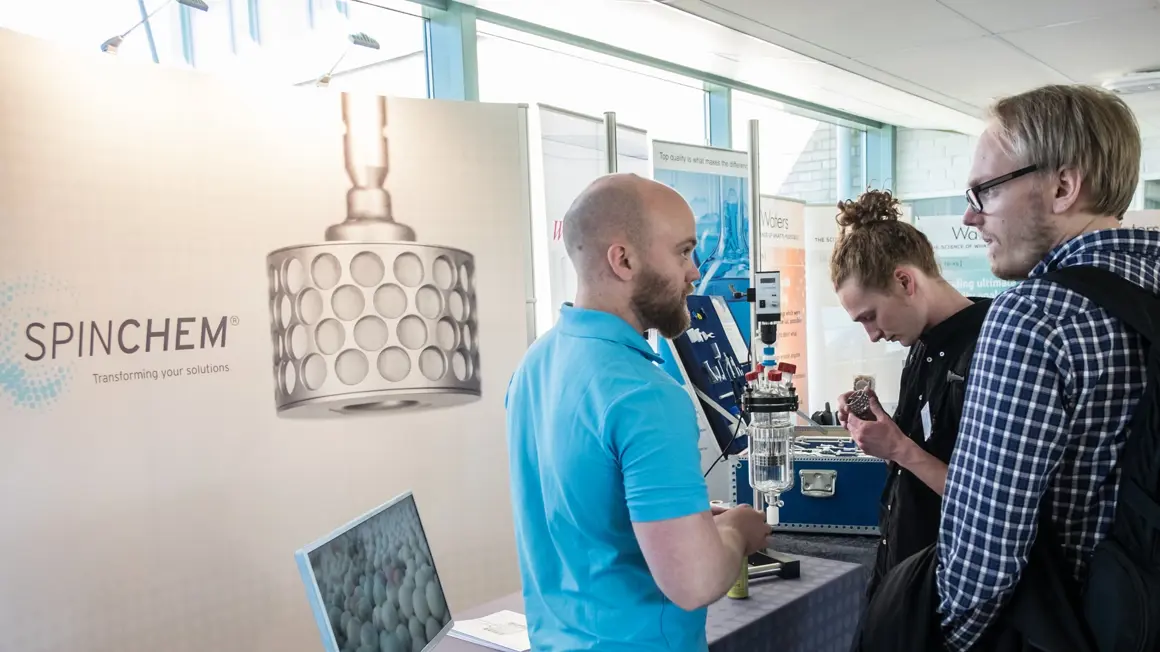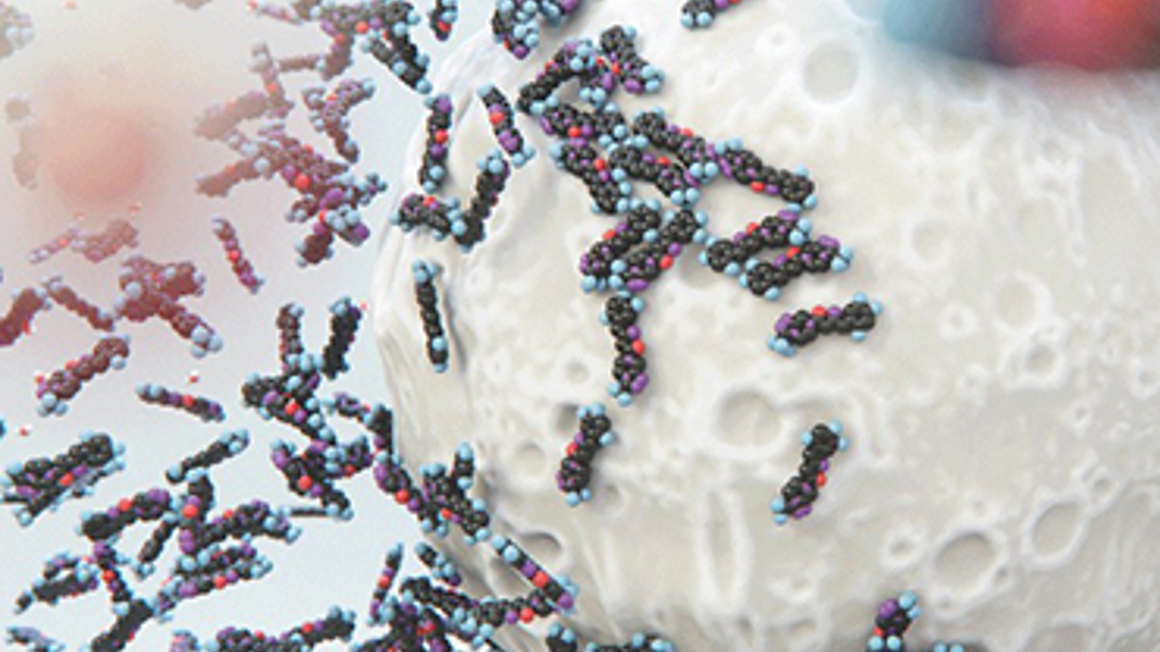Podcast timecode:
00:00 how SpinChem’s groundbreaking research earned them the University Spin-Off of the Year award.
00:21 SpinChem’s RBR addresses industry challenges with faster reactions, higher yields, and unmatched efficiency.
02:16 Trace SpinChem’s milestones, including breakthroughs in pharmaceuticals, water purification, and nuclear waste treatment.
04:27 Collaborative Process for Client Success
Tailored solutions for every challenge: SpinChem guides clients through feasibility studies, application development, and implementation to maximize RBR’s potential.
06:37 Innovative Applications in the Nuclear Sector
RBR tackles nuclear waste: SpinChem collaborates with experts to address radioactive waste treatment, showcasing the versatility of their technology.
08:09 Benefits and Sustainability of RBR Technology]
Efficiency meets sustainability: Faster reaction times, reduced waste, and reusable catalysts highlight how RBR sets a new standard for chemical processing.
10:15 Key Takeaways and SpinChem’s Future Potential
Shaping the future: SpinChem is redefining chemical processing with innovative, sustainable solutions and a commitment to being true partners in progress.
See the transcript below:
Eduardo Spinner:
Hey everyone and welcome back for another deep dive. Today, we're going to be talking about SpinChem.
Amy Lase:
SpinChem…
Eduardo Spinner:
And you may have heard of them recently because they just won the university spin-off of the year award.
Amy Lase:
That's right.
Eduardo Spinner:
So, pretty exciting stuff. We've got a bunch of articles and research papers, even some internal documents... And this company's story is fascinating.
Amy Lase:
Yeah, it really is. It all started back in 2007 as a spin-off from Umeå University up in Sweden. And originally their focus was on catalyst materials, but they really hit it big in 2010 when they invented this Rotating Bed Reactor technology.
Eduardo Spinner:
OK. So that's RBR.
Amy Lase:
RBR, that's right. And it's been making waves.
Eduardo Spinner:
OK. Cool. So we've got catalyst research, we've got this game-changing invention, and we've got an award-winning company. So what is the big deal about this RBR technology? Why should chemical engineers be excited about it?
Amy Lase:
Well, think about it this way, traditional chemical processes involving liquids often have a lot of challenges. You know, you're always dealing with slow reaction times and limited yields, and sometimes it's even hard to mix different substances effectively. The RBR tackles these issues head-on. So picture this, you've got a cylinder that's filled with this packed bed of catalyst material, but the cylinder rotates and it creates the swirling motion of the liquid reactants going through the bed.
Eduardo Spinner:
So it's almost like instead of everything just sitting there like in a traditional reactor, this RBR is keeping things moving, kind of like a super-efficient washing machine for chemical reactions.
Amy Lase:
Exactly. That constant movement really increases the contact between the reactants and the catalyst. And what does that lead to? Well, much faster reaction times and significantly improved yields.
Eduardo Spinner:
Wow, that sounds impressive! But let's rewind for a second. You mentioned that SpinChem started with catalyst research. So how did they go from that to developing this innovative RBR technology?
Amy Lase:
It's a great example of how a deep understanding of a problem can lead to ingenious solutions. So they were initially focused on finding more efficient solid-phase catalysts, which are essential for speeding up chemical reactions. But they realized that the limitations of traditional reactors were actually holding those catalysts back.
Eduardo Spinner:
So they saw an opportunity to not just improve the catalysts themselves but to rethink the environment where the catalysts operate.
Amy Lase:
Exactly. And that's where the RBR was born.
Eduardo Spinner:
That's cool.
Amy Lase:
It was designed specifically to maximize the performance of solid-phase catalysts.
Eduardo Spinner:
So it's a win, win.
Amy Lase:
Yeah, win, win.
Eduardo Spinner:
Now we've got a timeline here that shows SpinChem’s RBR technology has been adopted across a bunch of different industries.
Amy Lase:
It has.
Eduardo Spinner:
So back in 2015, they launched something called the Raft, which is this massive system for cleaning large volumes of water using RBR.
Amy Lase:
Huge!
Eduardo Spinner:
They also introduced the flagship RBR S2 that year. It seems like the pharmaceutical industry was one of the early adopters of this.
Amy Lase:
Absolutely. The pharmaceutical industry is always looking for ways to increase efficiency and reduce waste.
Eduardo Spinner:
Of course!
Amy Lase:
And the RBR really offered a compelling solution to them.
Eduardo Spinner:
And SpinChem didn't stop there. In 2016, they partnered with Atkins, which is a major engineering firm.
Amy Lase:
Yeah, big firm.
Eduardo Spinner:
…to develop a solution for removing radioactive particles from wastewater, which is a huge step. That's a pretty big leap from pharmaceuticals to nuclear waste treatment.
Amy Lase:
It is.
Eduardo Spinner:
So it seems like they're not afraid to tackle some challenging problems.
Amy Lase:
No, they are not, and they keep going.
Eduardo Spinner:
Yeah. So this timeline also mentions they were working with oil purification in 2019 and then by 2021 they had full-scale implementation of the RBR in food oil production. So it's clear this technology has applications across tons of different industries.
Amy Lase:
Absolutely. A lot of potential. And what's really interesting is that through this whole journey, they've remained committed to continuous improvement. They've introduced new products, refined designs, and expanded their services to really support their clients through every step of the implementation process.
Eduardo Spinner:
So it's not just about selling a product, it's about providing a complete solution.
Amy Lase:
It is. That level of support is crucial, especially when you're dealing with cutting-edge technology like this.
Eduardo Spinner:
Sure, absolutely.
Amy Lase:
And that really shows in their comprehensive service offerings. They don't just sell you an RBR and say good luck. They really work with you from the initial feasibility screening all the way to full-scale process design and implementation.
Eduardo Spinner:
OK. So walk me through that process. What does it actually look like for a company that wants to start using this technology?
Amy Lase:
Sure. So it starts with that feasibility screening. They run these quick trials to figure out if the RBR is a good fit for what the client's needs are.
Eduardo Spinner:
Makes sense.
Amy Lase:
And if it can be cost-effective for them, it's all about making sure they're getting the right tool for the job.
Eduardo Spinner:
Right, you don't want to invest in something that's not going to actually get you results.
Amy Lase:
Correct.
Eduardo Spinner:
So what happens if that feasibility screening looks good?
Amy Lase:
Well, then they move into application development. This is where they really dig in, collaborate with the client, test different parameters, fine-tune the process, and really get the most out of that RBR.
Eduardo Spinner:
That sounds like a pretty collaborative process.
Amy Lase:
It is!
Eduardo Spinner:
Which I imagine is probably good for companies who are new to all of this.
Amy Lase:
Absolutely. SpinChem knows that transitioning to new technology can be tough. So they guide you through every step of the way. And once they've got the testing and optimization done, they move on to a pilot stage.
Eduardo Spinner:
OK, the pilot stage. So that's where you see how things work on a larger scale?
Amy Lase:
Exactly. It's really important before you go into full production. SpinChem uses modeling, simulations, and calculations to predict what the output should be and identify any challenges.
Eduardo Spinner:
It's all about reducing risk.
Amy Lase:
Exactly.
Eduardo Spinner:
And making sure that transition to full production goes smoothly.
Amy Lase:
Exactly. And then once that pilot stage is successful, they help you with the full-scale process design, take everything they've learned from the earlier stages, and make a tailor-made solution for that client.
Eduardo Spinner:
That's pretty impressive. They're really covering all the bases.
Amy Lase:
They do, and they even do commissioning. They manufacture the equipment, provide all the documentation, and they even offer installation. They've got a global reach.
Eduardo Spinner:
So it doesn't matter where you are.
Amy Lase:
It doesn't matter where you are, they can help you.
Eduardo Spinner:
It sounds like they're with you every step of the way.
Amy Lase:
They are!
Eduardo Spinner:
From testing to implementation. What about ongoing support? Do they offer any kind of service agreements?
Amy Lase:
Yeah, they do. They've got service and license agreements to make sure the system stays reliable and keeps the clients up to date.
Eduardo Spinner:
So they're not just selling a product, they're building long-term partnerships.
Amy Lase:
Exactly.
Eduardo Spinner:
Now, we've talked a lot about how versatile the RBR technology is.
Amy Lase:
We have.
Eduardo Spinner:
And this timeline highlights some pretty diverse applications. But one that I found really interesting was their work in the nuclear sector. It seems like a really specialized field.
Amy Lase:
It is! And it's an area where they've really become well known. They partnered with Atkins Realis—that's a company that specializes in nuclear decommissioning and waste management. And together they use SpinChem’s Spinionic solutions.
Eduardo Spinner:
We hear a lot about the challenges of nuclear waste treatment, so what makes their approach so unique?
Amy Lase:
Well, their Spinionic technology is non-nuclear, and it's specifically for decontaminating liquids.
Eduardo Spinner:
OK.
Amy Lase:
They remove the radioactive elements. And you want to guess what's at the heart of it?
Eduardo Spinner:
The RBR, I'm assuming.
Amy Lase:
You got it. The RBR is so good at transferring mass that it makes it super effective at treating this radioactive waste. They can treat everything from small drums of waste to huge tanks, even open water.
Eduardo Spinner:
So they took a technology that was developed for pharmaceuticals and adapted it to address one of the biggest environmental problems we've got?
Amy Lase:
Exactly! It really shows their ingenuity and commitment to sustainable solutions.
Eduardo Spinner:
So we've got this RBR technology. It's at the core of SpinChem’s success. We've seen how it's used in all these different industries from pharmaceuticals to food production, to nuclear waste. But let's talk more about the tech itself. What makes the RBR so special? What are the benefits? What sets it apart?
Amy Lase:
Well, there's a few key advantages. First of all, it's super efficient. The rotating bed design maximizes contact between the reactants and the catalyst, which makes reaction times way faster. We're talking reducing reaction times from hours to minutes.
Eduardo Spinner:
That's a huge improvement.
Amy Lase:
It is. Time is money in any industry. So that efficiency is a big selling point.
Eduardo Spinner:
And it's not just about speed, you're also getting better results, right?
Amy Lase:
You are.
Eduardo Spinner:
Higher yields from the same material.
Amy Lase:
Exactly. Faster reaction times also give you higher yields, so you're getting more product.
Eduardo Spinner:
So it's more efficient, and you're getting more out of your resources.
Amy Lase:
Absolutely.
Eduardo Spinner:
And all of that leads to lower energy consumption.
Amy Lase:
That's right.
Eduardo Spinner:
If your reactions are happening quicker, you're not running the equipment for as long.
Amy Lase:
Exactly!
Eduardo Spinner:
Which is a big deal now with sustainability being so important.
Amy Lase:
Absolutely. And speaking of sustainability, the efficiency of the RBR also means less waste.
Eduardo Spinner:
Makes sense.
Amy Lase:
You get more precise reactions, and you get higher yields.
Eduardo Spinner:
So you're creating less of those unwanted byproducts.
Amy Lase:
So it is just a more environmentally friendly approach overall.
Eduardo Spinner:
It is! And there's one more thing I want to mention about sustainability: you can reuse the catalyst. The RBR design often lets you use the catalyst many times, so you don't have to produce new catalyst as much.
Amy Lase:
That's a huge advantage!
Eduardo Spinner:
It is! Catalysts can be expensive; they take a lot of resources to make. So being able to reuse them is a game changer.
Amy Lase:
It is. And this is another great example of how SpinChem’s RBR tech is really pushing the boundaries of what we can do with chemical processing. It's not just about improving efficiency; they're changing the way we think about sustainability in the industry.
Eduardo Spinner:
Absolutely.
Amy Lase:
Yeah.
Eduardo Spinner:
It's really inspiring to see a company pushing the boundaries like that, but also really caring about sustainability and their clients.
Amy Lase:
Yeah, it's a powerful combo for sure.
Eduardo Spinner:
And I think SpinChem's success really shows that innovation and sustainability can work together.
Amy Lase:
They do. It's definitely possible to develop this cutting-edge technology that's good for the environment and makes sense economically.
Eduardo Spinner:
So as we wrap up our deep dive into SpinChem, what are some key takeaways you think our listeners should keep in mind?
Amy Lase:
Well, first and foremost, SpinChem is changing the game in chemical processing with this rotating bed reactor technology. It's a big deal for efficiency, yield, and sustainability. It's not just about small improvements; they're changing the way we approach these reactions.
Eduardo Spinner:
It's about doing more with less.
Amy Lase:
Exactly! Less time, less energy, less waste, but better results in the end.
Eduardo Spinner:
Yeah. And they're not just focused on the tech itself; they offer a whole bunch of services to help their clients through the entire process—from those early feasibility studies and pilot tests to full-scale implementation and ongoing support. They're real partners in innovation, and that's so important.
Amy Lase:
It is.
Eduardo Spinner:
It's not just about selling something; it's about making sure your clients can use it and get the most out of it.
Amy Lase:
Absolutely. And with all the different products and configurations they've got, they have solutions for all kinds of applications and scales. It doesn't matter if you're a small company trying to improve your batch processing or a big corporation tackling an environmental challenge. SpinChem probably has a solution that can work for you.
Eduardo Spinner:
So if there's one thing our listeners should remember, it's that SpinChem is a company to watch. They're leading the way in this tech shift in the chemical processing industry, and the fact that they're so dedicated to innovation, sustainability, and their clients makes them a real force to be reckoned with.
Amy Lase:
I totally agree. SpinChem is a perfect example of what you can do when you combine great engineering with a real passion for making a difference in the world.
Eduardo Spinner:
Well said, and with that, we've reached the end of our deep dive into SpinChem. Thanks for joining us.
Amy Lase:
It's been fun exploring the world of SpinChem with you.
Eduardo Spinner:
Until next time, keep those brains working, and we'll see you at the next deep dive



